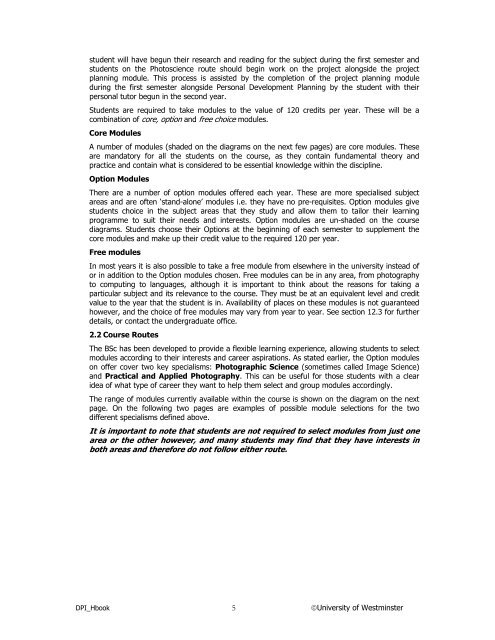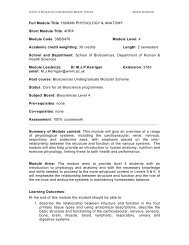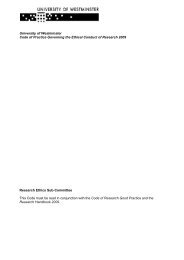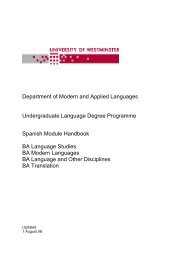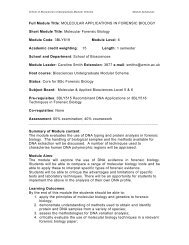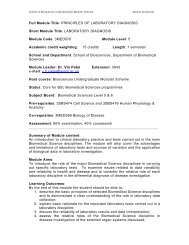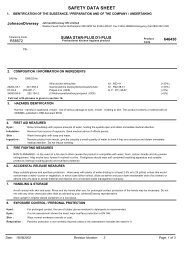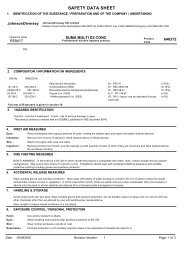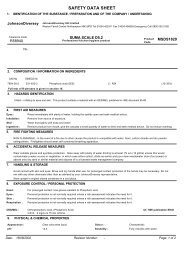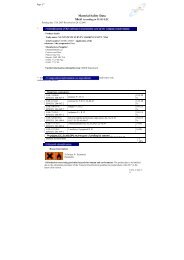CONTENTS 1. Introduction 1.1 Course Outline 1 1.2 Introduction ...
CONTENTS 1. Introduction 1.1 Course Outline 1 1.2 Introduction ...
CONTENTS 1. Introduction 1.1 Course Outline 1 1.2 Introduction ...
You also want an ePaper? Increase the reach of your titles
YUMPU automatically turns print PDFs into web optimized ePapers that Google loves.
student will have begun their research and reading for the subject during the first semester and<br />
students on the Photoscience route should begin work on the project alongside the project<br />
planning module. This process is assisted by the completion of the project planning module<br />
during the first semester alongside Personal Development Planning by the student with their<br />
personal tutor begun in the second year.<br />
Students are required to take modules to the value of 120 credits per year. These will be a<br />
combination of core, option and free choice modules.<br />
Core Modules<br />
A number of modules (shaded on the diagrams on the next few pages) are core modules. These<br />
are mandatory for all the students on the course, as they contain fundamental theory and<br />
practice and contain what is considered to be essential knowledge within the discipline.<br />
Option Modules<br />
There are a number of option modules offered each year. These are more specialised subject<br />
areas and are often ‘stand-alone’ modules i.e. they have no pre-requisites. Option modules give<br />
students choice in the subject areas that they study and allow them to tailor their learning<br />
programme to suit their needs and interests. Option modules are un-shaded on the course<br />
diagrams. Students choose their Options at the beginning of each semester to supplement the<br />
core modules and make up their credit value to the required 120 per year.<br />
Free modules<br />
In most years it is also possible to take a free module from elsewhere in the university instead of<br />
or in addition to the Option modules chosen. Free modules can be in any area, from photography<br />
to computing to languages, although it is important to think about the reasons for taking a<br />
particular subject and its relevance to the course. They must be at an equivalent level and credit<br />
value to the year that the student is in. Availability of places on these modules is not guaranteed<br />
however, and the choice of free modules may vary from year to year. See section 12.3 for further<br />
details, or contact the undergraduate office.<br />
2.2 <strong>Course</strong> Routes<br />
The BSc has been developed to provide a flexible learning experience, allowing students to select<br />
modules according to their interests and career aspirations. As stated earlier, the Option modules<br />
on offer cover two key specialisms: Photographic Science (sometimes called Image Science)<br />
and Practical and Applied Photography. This can be useful for those students with a clear<br />
idea of what type of career they want to help them select and group modules accordingly.<br />
The range of modules currently available within the course is shown on the diagram on the next<br />
page. On the following two pages are examples of possible module selections for the two<br />
different specialisms defined above.<br />
It is important to note that students are not required to select modules from just one<br />
area or the other however, and many students may find that they have interests in<br />
both areas and therefore do not follow either route.<br />
DPI_Hbook 5 ©University of Westminster


